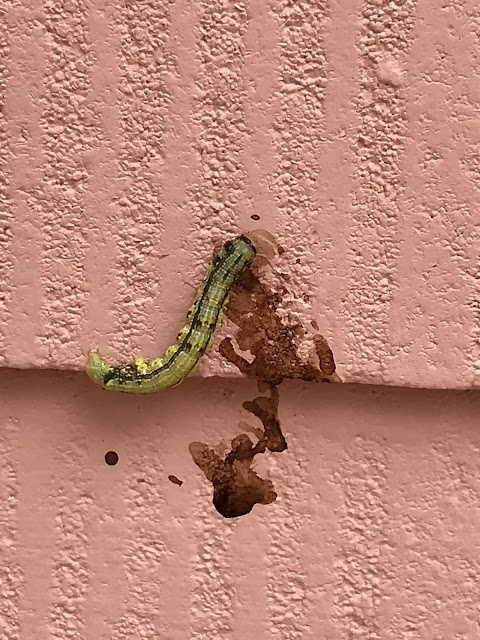 |
Small phigalia moth
|
So why are so many caterpillars dying? I asked Wizzie Brown, a program specialist with Texas AgriLife Extension, and here's what she had to say:
"It is probably a virus that has infected a portion of the spring cankerworm population. When caterpillars are infected with a virus, they seek out 'higher ground' to die. This is actually something that allows the virus to be spread throughout the population more readily since the virus needs to be consumed to affect the host. If the caterpillar dies at a higher location, then that will allow the virus to possibly drop and spread over a larger area. Once the caterpillars die, they will look like they are melting as the body breaks down and eventually splits open to release the replicated virus.
"Should you be concerned? I would say no, as it's just nature happening. This is the first reported case I've gotten of this, but it could be happening elsewhere. Viruses are pretty specific to their arthropod host, so I wouldn't think that they would move from an insect to a bird."
Thank you, Wizzie!
 |
Forest tent caterpillar
|
 |
Sawfly larva
|
 |
Cutworm moth
|



















































